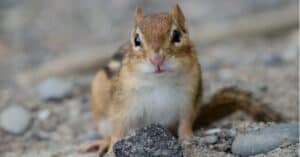The tiny and slim southern red-backed vole, also known as Gapper’s red-backed vole (Myodes gapperi), inhabits regions of Canada and the northern United States. It shares a close genetic link with the Hopi chipmunk (Neotamias rufus), which thrives in Colorado, Arizona, and Utah. Despite their initial resemblance, these rodents exhibit unique characteristics and behaviors that differentiate them. Here are five critical distinctions between them:
| Characteristics | Southern Red-Backed Vole | Hopi Chipmunk |
|---|---|---|
| 1. Appearance | Gray fur with a rust-red stripe, yellowish-brown face and sides, white to gray undersides, small tail, short ears, and pointed nose. | Black stripes, orange-red to buff coat color, relatively short tail, females slightly larger than males. |
| 2. Range and Habitat | Lives in the Adirondacks, in all terrestrial habitats and elevations. Found in Arizona, Utah, and Colorado. | Lives in barren rocks or rocky terrain with juniper or pine trees. |
| 3. Reproduction | Begins reproducing at three months, breeds from March to November, has 2 to 8 pups per litter, 2 to 3 litters a year. | Breeds from February to mid-April; has 4 to 7 younglings per litter |
| 4. Lifespan | A short lifespan of 10-20 months. | Can survive for 2 to 8 years in the wild. |
| 5. Diet | Consumes a varied omnivorous diet that fluctuates seasonally. | Omnivores whose diet consists primarily of seeds. |
Background Information on Chipmunks
Chipmunks belong to the squirrel family and separated from rats and mice approximately 70 million years ago. According to scientists, chipmunks likely developed their distinctive stripes independently, separate from mice and rats. The Siberian chipmunk is the only chipmunk not indigenous to North America – a fact denoted by its name. Chipmunks earned their name from their habit of waking from slumber to nibble on their hoarded food. The moniker “Chipmunk” arises from the “chip chip” noise they emit while munching.
Background Information on Voles
The term “vole” refers to a group of tiny rodents similar to mice that belong to the family Cricetidae and subfamily Arvicolinae. There are 155 vole species, including southern red-backed voles, genetically related to lemmings and hamsters. These rodents are also commonly referred to as field mice or meadow mice.
The Cricetidae family traces its origins to the early Oligocene period around 33.9 to 23 million years ago, where it underwent significant adaptations to adjust to different environments. It wasn’t until the Pliocene period, from 5.3 to 2.59 million years ago, that the first voles emerged alongside lemmings. These creatures then started diversifying around 2.58 million to 11,700 years ago during the Pleistocene Epoch.
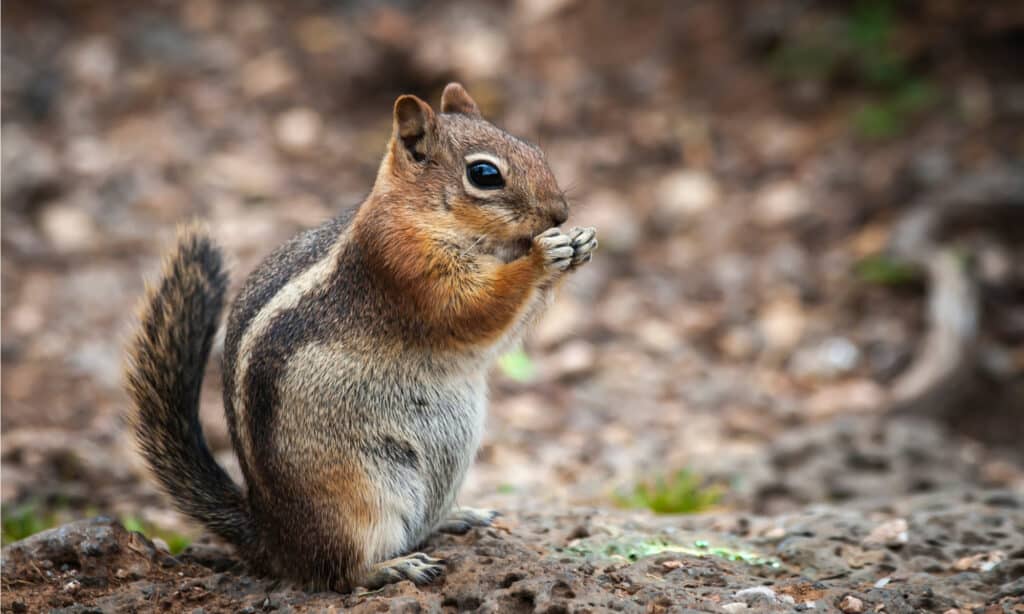
This chipmunk is taking a break from foraging to enjoy its tasty snack.
©Cindy Larson/Shutterstock.com
A Comparison of Southern Red-Backed Vole and Hopi Chipmunk
1. Physical description
The southern red-backed voles have slender bodies with a striking reddish stripe along their backs. Their head and body sides appear gray, while the underside of their body displays a paler tone.
Their measurements clock in at 12 to 16.5 centimeters, including a 4-centimeter tail, and their weight fluctuates between 6 to 42 grams, with an average of 20.6 grams. Their weight varies from 6 to 42 grams, with an average of 20.6 grams.
The weight of the Hopi chipmunk fluctuates within the range of 70-142 grams (2.5-5 ounces). Its body extends 14-19 cm (5.5-7.5 inches), while the tail measures 8-11 cm (3.1-4.3 inches). Unlike its fellow chipmunks, the Hopi chipmunk’s dorsal pelage lacks significant black in the stripes, and its coat color leans more towards the orange-red to buff spectrum. Females exhibit a slightly larger body size than males.
2. Range and Habitat
The southern red-backed vole is distributed throughout various continents, including North America, specifically in Canada and the United States. They live in regions like New Brunswick, Saskatchewan, Northwest Territories, Labrador, Nova Scotia, Alberta, Québec, Prince Edward I, Newfoundland I, Ontario, British Columbia, and Nunavut. They’re also present within the biogeographical realm of Nearctic and WWF biomes such as Taiga and Tundra. They dwell in coniferous, deciduous, and mixed forests, typically near wetlands.
The distribution of Hopi chipmunks spans several biogeographical realms and WWF biomes, including:
- Desert and Xeric Shrublands.
- Montane grasslands and shrublands.
- Tropical coniferous forests.
These chipmunks are present in the southwestern United States, specifically in Colorado, Arizona, and Utah. Hopi chipmunks prefer rocky areas that are rich in pinyon and juniper pines. They like to dwell in rock formations with deep cracks and openings, as they make excellent den sites.
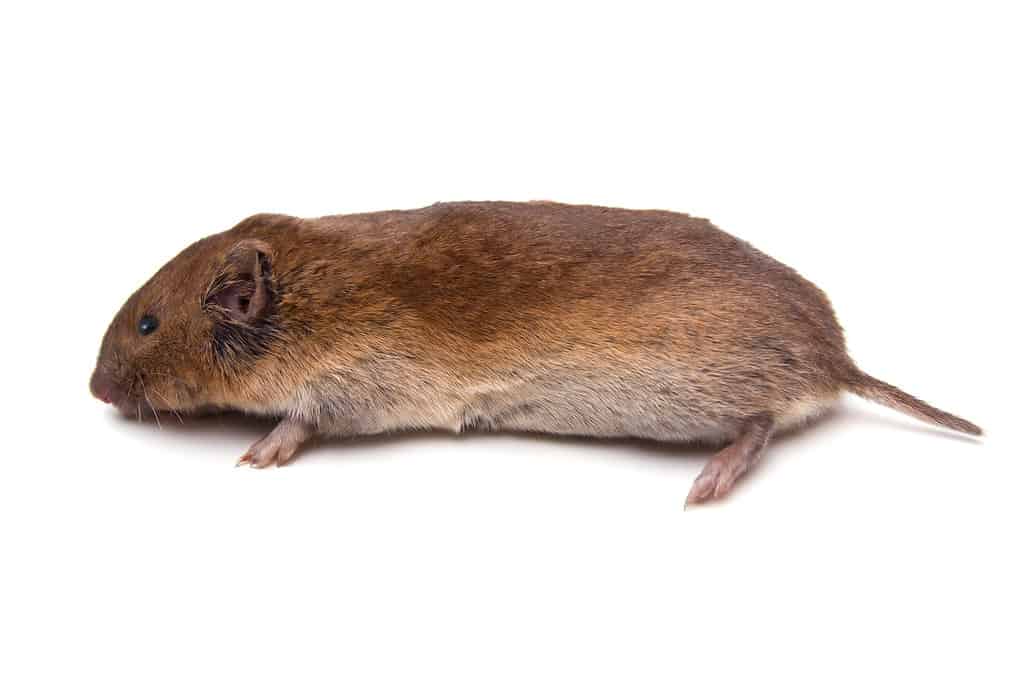
Voles are small rodents found throughout the northern hemisphere and are known for their burrowing and tunneling habits. They are active both day and night and inhabit a variety of environments, including grasslands, forests, fields and even gardens.
©iStock.com/epantha
3. Reproduction
Red-backed voles’ breeding cycle starts from late winter all through to late fall. The gestation period, lasting 17 to 19 days, yields a litter size ranging from a single offspring to a maximum of 11 younglings. Females can produce two to three litters each year. Upon birth, these younglings are naked and sightless, seeking solace in a protective nest constructed by their mother.
After only four days, they can stand upright, and their fur grows fully by day eight. The eyes open on the fifteenth day. The pups nurse on their mother’s milk, with weaning taking place between 17 to 21 days. Sexual maturity kicks in at around three months. Red-backed voles construct their nests under stumps, logs, or brush piles, with some preferring the safety of tree branches or holes high above the ground.
Hopi chipmunks’ breeding season spans from February to mid-April. The females produce one litter comprising 4 to 7 newborns. These pups are born altricial, weighing 3 grams, after 30-33 days of gestation. After birth, they stay with their mother until they mature enough to venture independently.
At the tender age of 5 weeks, the young Hopi chipmunks begin to explore their surroundings. Weaning typically starts at 6 to 7 weeks old, culminating in complete independence. Hopi chipmunks attain sexual maturity between the ages of 10 to 12 months. Most females can produce their first litter in their initial year.
4. Lifespan
The southern red-backed vole has a brief lifespan of 10-20 months. In contrast, the Hopi chipmunk can survive for 2 to 8 years in the wild.
5. Diet
Red-backed voles change their diet as the seasons shift. They feast on leaves and shoots in spring. As summer rolls in, they chow down on fruits and berries. During fall, their menu switches to nuts and seeds. However, they don’t limit themselves to just plants. These omnivores also indulge in roots, bark, insects, lichens, and fungi. They usually store food in their nests to prepare for winter.
The Hopi chipmunk eats various things, such as nuts, seeds, fruits, insects, small animals, and mushrooms. They demonstrate an omnivorous nature and primarily rely on foraging to survive in the wild. These rodents typically favor high-energy foods, such as acorns and nuts, to accumulate fat reserves for winter hibernation. When these items become scarce during summer, they increase their consumption of grains and grasses. Moreover, they incorporate insect larvae and invertebrates into their diet to maintain a balanced nutrient intake.
They stash some of their food underground, near trees or rocks, where it’s secure from predators and readily accessible when needed. This strategy is particularly beneficial during colder seasons, as the stored fats are vital for their survival during hibernation in the winter.
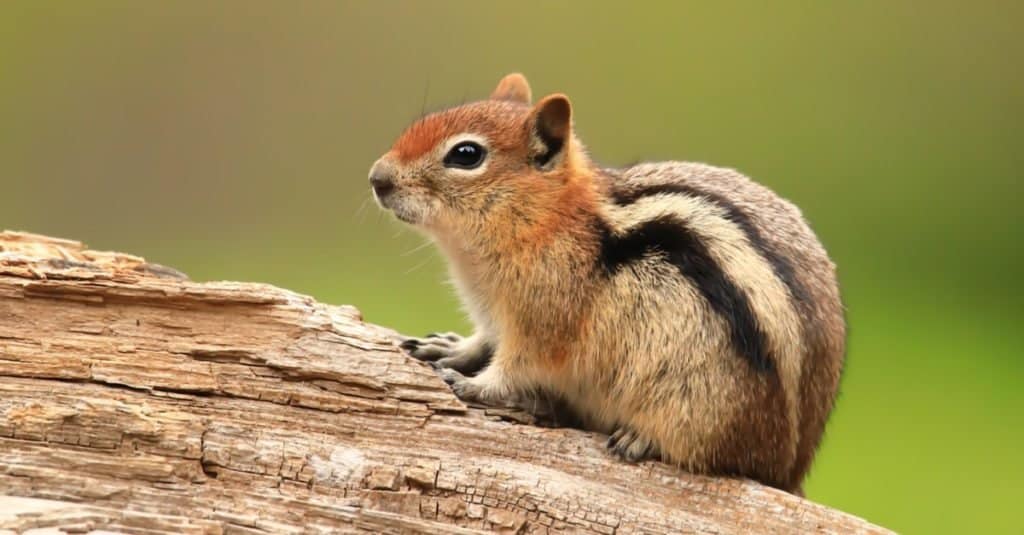
This is a chipmunk, an omnivorous rodent found throughout North America. Its diet consists of a variety of foods including seeds, nuts, fruits, insects and even small birds.
©AmberLouise/Shutterstock.com
How Do Red-Backed Voles Behave?
Red-backed voles exhibit nocturnal activity, although they may also demonstrate diurnal activity. They don’t hibernate and are usually present near rocks or fallen logs. While searching for food, they may traverse subterranean passageways. They generally hop as opposed to run. Rather than construct their own pathways, they prefer to use those already established by other small creatures, such as moles or shrews. Their shelters take the form of ball-shaped nests constructed from materials like grasses, shredded leaves, mosses, or lichens. In the winter, they may erect such nests directly on the ground beneath the snow.
When startled, red-backed voles will let out a sound that resembles a chirp or a bark when agitated; the sound is audible from one to two meters. Depending on the situation, they may either freeze in position or flee. They also have a habit of grinding or chattering their teeth. Red-backed voles are solitary creatures, and they fiercely defend their dwellings from other red-backed voles and other species. Only between a mother and her offspring do we see any friendly interaction.
How Do Hopi Chipmunks Behave?
The Hopi chipmunk operates primarily during daylight hours. To find food, they scour for seeds, berries, and insects. They use alert calls to warn others of imminent danger or signal a possible food source.
Their inquisitive nature is often on display as they investigate their surroundings, including trees, rocks, and logs, searching for potential sources of nourishment. Juvenile chipmunks demonstrate their curiosity and interest through playful antics, jumping around, and examining objects. Both male and female chipmunks employ aggressive behavior to protect their territory from other chipmunks or unwelcome intruders, like cats or dogs.
What Are Their Conservation Status?
The International Union for Conservation of Nature (IUCN) Red List categorizes Hopi chipmunks as “Least Concern” due to their abundance, extensive distribution, and absence of significant dangers. The Southern red-backed vole also appears devoid of conservation concerns, potentially due to its widespread distribution.
Predators And Threats
Southern red-backed voles and Hopi chipmunks are the subjects of intense predation from various carnivores with a penchant for hunting rodents. These predators include:
1. Hawks
These aerial hunters have honed their skills to perfection in capturing rodents and other small mammals. Hawks are dispersed across a vast expanse of the United States, making it challenging to pinpoint where these birds of prey and these rodents interact the most. Nonetheless, it’s reasonable to speculate that such encounters occur in wooded areas, given that Cooper’s hawks tend to hunt in densely covered environments.
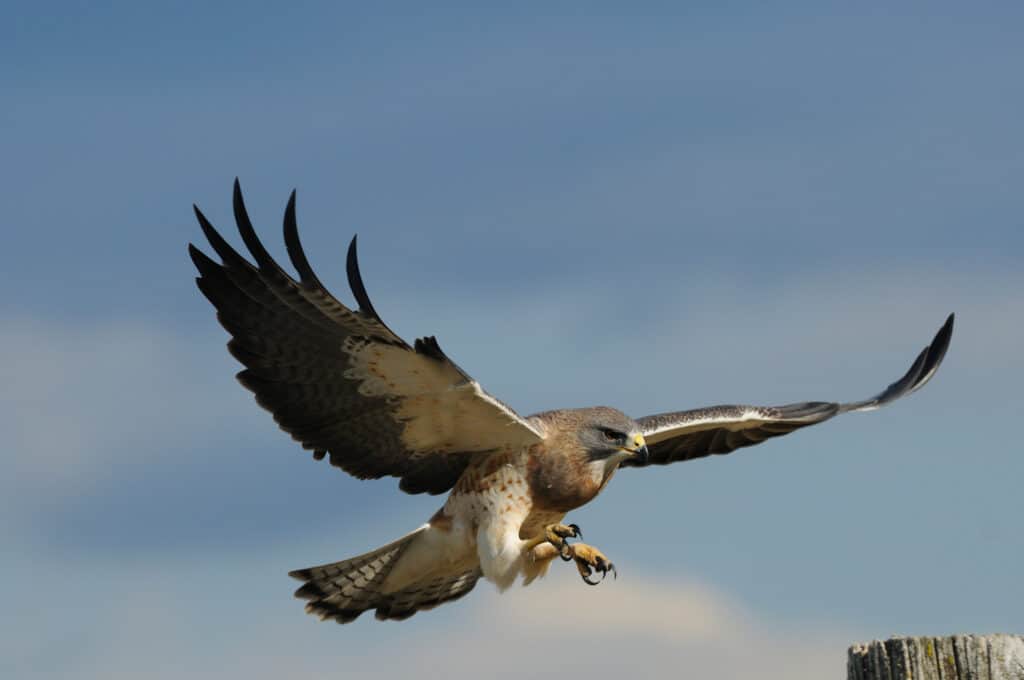
The Swainson’s hawk is a powerful hunter, capable of swooping down and catching small prey. Small mammals like voles and chipmunks are especially vulnerable to its sharp eyesight.
©Rob McKay/Shutterstock.com
2. Owls
Certain kinds of owls, just like their hawk counterparts, go after red-backed voles and Hopi chipmunks. However, some owl varieties are more prone to this hunting activity than others.
One such species is the great horned owl. These sizable birds of prey primarily hunt at night but may occasionally search for prey during the day and snatch up a chipmunk or vole.
Another owl that preys on them is the barred owl. Though slightly smaller than the great horned owl, the barred owl still poses a threat to small mammals.
Occasionally, other owl species, such as eastern screech owls, barn owls, and great gray owls, may also consume rodents. However, most other owl species in North America are too tiny to capture a chipmunk or vole successfully.

Great horned owls are powerful hunters, using their sharp talons and beak to catch small animals like chipmunks and voles. Moving at a speed up to 60 mph, these predators can hunt even the quickest of prey.
©cindylindowphotography/Shutterstock.com
3. Snakes
Snakes have an extensive prey list, and chipmunks and voles are among their potential targets. The black rat snake and the western diamondback rattlesnake are two snake species that specifically hunt for these rodents. People often dread the former due to its impressive size, which can reach up to six feet. Nonetheless, these snakes are remarkable at controlling rodents and pose no venomous threat. In contrast, the western diamondback rattlesnake may not be as welcomed in one’s yard due to its vicious nature

Snakes are known to be excellent hunters, and the timber rattlesnake is no exception. This particular snake has been captured in mid-hunt feasting on a chipmunk it has caught.
©Joe McDonald/Shutterstock.com
4. Foxes
Foxes are widely distributed across the United States but seldom encountered. Four species of foxes inhabit the region, out of which only three engage in the hunting of rodents.
The red fox, a furry creature seen in most parts of the country except the far Southwest, Southeast, and some regions of the Great Plains, is one of them.
The gray fox, a canid found throughout the United States, includes chipmunks in its diet, alongside plants and insects. There is also the kit fox, an animal known to dwell in desert areas and primarily located in the Southwestern U.S. Despite being confined to such regions, they have been spotted as far north as Oregon.
Foxes, chipmunks, and voles often share the same habitat, such as mature forests and wooded areas.
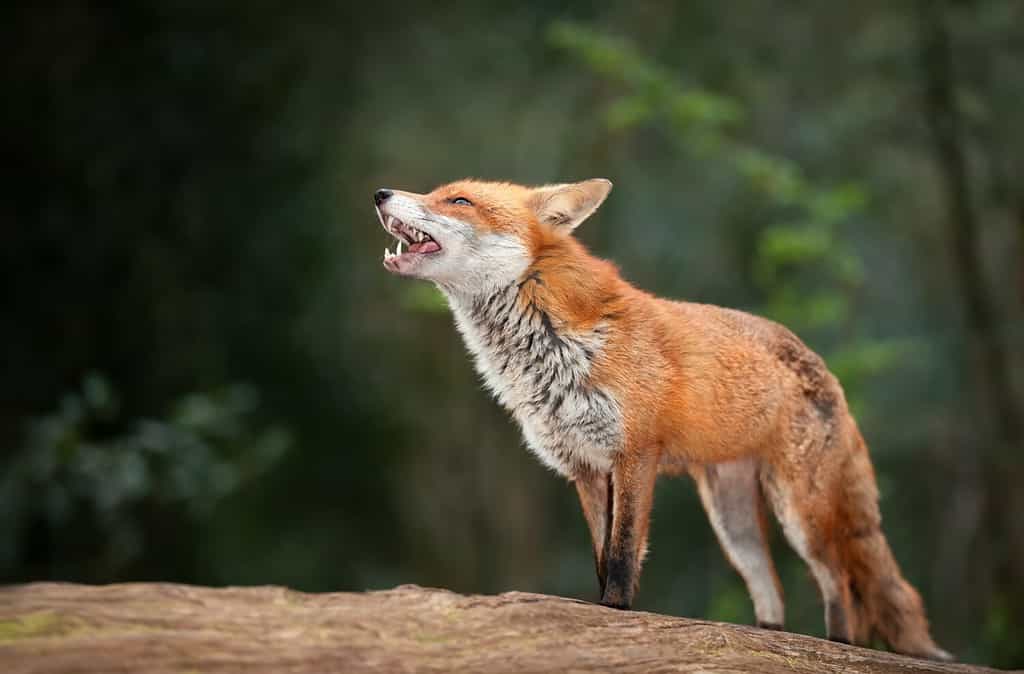
Armed with stealth and agility, red foxes are excellent hunters of small animals such as chipmunks and voles.
©Giedriius/Shutterstock.com
5. Coyotes
Coyotes are not picky eaters and will seize any chance to feast on chipmunks and voles in their vicinity.
According to the College of Natural Resources, coyotes mainly target white-tailed deer and munch on small critters like rats, mice, voles, and chipmunks between their main meals. The same study revealed that rodents are more vulnerable in the warmer months of spring, summer, and fall while hibernating in the winter.
Coyotes and rodents frequently cross paths along the edges of forests and grassy fields. While they may form packs to take down bigger prey, coyotes prefer to hunt alone when stalking smaller creatures.
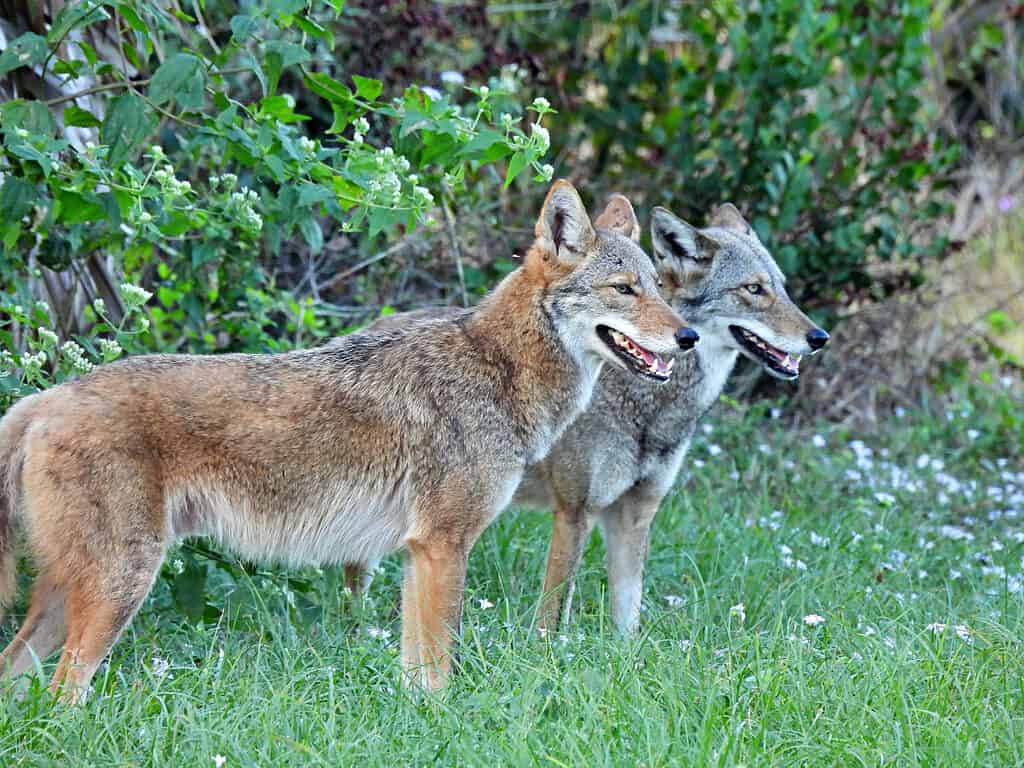
Coyotes are formidable predators and have adapted their hunting tactics to take down small mammals like chipmunks and voles.
©iStock.com/passion4nature
6. Bobcats
According to the Adirondack Ecological Centre, birds and mammals make up roughly half to three-quarters of what bobcats eat. Nevertheless, bobcats prefer to prey on rabbits over chipmunks and voles.
As these feline predators stalk their rodent quarry, their patience knows no bounds. They silently shadow their target with padded paws, waiting until they are in striking range. Bobcats will relentlessly track their prey, traveling great distances to pursue their game.
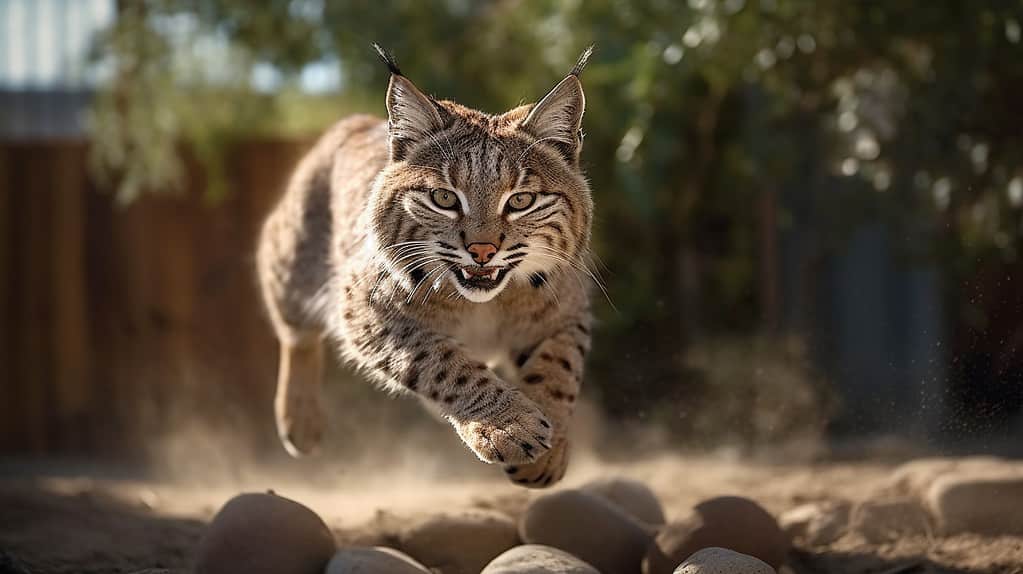
7. Fishers
Fishers and martens are closely related, belonging to the same weasel family. However, fishers outsize martens with more circular noses and ears. Fishers’ necks lack the distinctive orange hair that martens have.
Fishers have a penchant for porcupines and snowshoe hares when it comes to satiating their predatory desires. However, although infrequent, the consumption of voles and chipmunks cannot be entirely ruled out.
Fishers track down their targets in forested regions, where fallen trees, rock crevices, and hollow logs offer ideal hiding spots for their prey. These creatures can also stretch their bodies to great lengths, enabling them to access even the tiniest rodent burrows.
The Wrap-Up: Southern Red-Backed Vole vs. Hopi Chipmunk
Although the southern red-backed vole and Hopi chipmunk have a close genetic relationship, they possess distinct differences in various aspects such as physical appearance, range and habitat, reproduction, lifespan, and diet. Specifically, southern red-backed voles have gray fur with a rust-red stripe and consume plants and animals, whereas Hopi chipmunks feature black stripes and mainly feed on seeds.
Moreover, southern red-backed voles inhabit Canada and the northern part of the United States, while Hopi chipmunks thrive in Colorado, Arizona, and Utah. These variations in traits and behaviors demonstrate how closely-related species can demonstrate unique adaptations to their surroundings.
The photo featured at the top of this post is © iStock.com/AGAMI stock
Thank you for reading! Have some feedback for us? Contact the AZ Animals editorial team.





